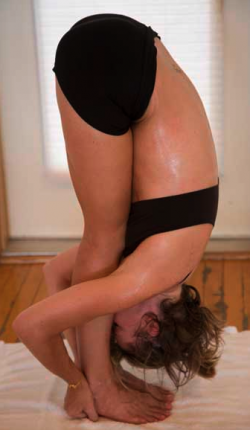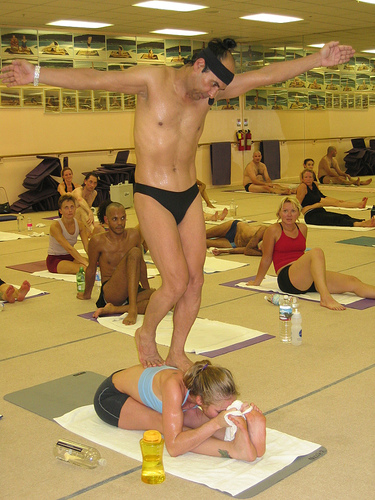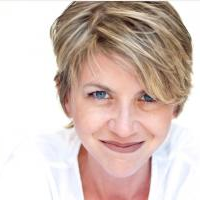Disclaimer: The below represents the personal opinion, view or experience, of the author, and can not reflect elephant journal as a whole.
Disagree with this Op-Ed or opinion? We’re happy to share your experience. If you are offering a rebuttal, please say so in notes, and we will give it priority if it passes the smell test. elephant takes our role as a community forum as a fun privilege, and is always happy to make corrections or in rare cases take an article down as need be.
elephant is a diverse community. We are reader-created. Many blogs here are experience and not fact or The One Right Point of View. We welcome all points of view, especially when offered with more sources and less invective, more frankness and less PR. Dislike this Op-Ed or opinion? Share your own take here.
There have been rumblings recently in the world of hot yoga.
As Bikram Choudhury comes face-to-face with the fallout of his personal conduct in the form of several lawsuits (including alleged rape), an increasing number of Bikram studios are choosing to rebrand, disassociating themselves from the Bikram empire.
Facilitating this shift is the court ruling that his famous 26-posture sequence cannot be copyrighted and, therefore, may be taught freely.
Originally from Calcutta, Bikram Choudhury trained with Bishnu Ghosh (Paramanhansa Yogananda’s brother and a yoga guru in his own right) winning three asana championships in his teens. He moved to Los Angeles in the early 1970s where his charismatic persona and revolutionary hot yoga practice quickly became a sensation. He became known as the “Guru to the Stars,” with a long list of famous clients. In the 1980s, at the urging of his wife, Rajashree, he expanded his empire and began training teachers so that they could open their own studios and reach a greater number of students with the Bikram method.
Over the last decade and a half, the Bikram method saw explosive growth—there are now approximately 650 Bikram studios worldwide. During this time, Bikram also started to stir up controversy with his unsuccessful attempt to copyright his 26-posture sequence (an appeal is still pending), and his hyperbolic statements about the exclusive efficacy of his own method.
His intentionally public attitude is counter to what is commonly considered to be in the spirit of yoga as described by Patanjali’s Yoga Sutras, and is a reflection of the way he teaches. Bikram Yoga is a method of fitness, not a spiritual practice. The man is the embodiment of the method (or perhaps, vice versa.) As his teacher trainings grew, his teaching methods became more extreme and his behavior more erratic.
Mark Drost spent six years as a senior member of the Bikram training staff, from 2002-2008, before he left to start evolation, which he now runs with his wife Zefea Samson. Drost says during the time he worked closely with Choudhury, he saw a steady decline in the quality of the teacher training.
“The training is good. It’s a boot camp for yoga. But it does not teach you how to teach. It does not give you the specifics of the postures. You get physically very strong because you are in the hottest room you’ve ever practiced in. And then you learn the script. That’s all you do for nine weeks. When people come out of that training, they have not taught more than one posture at a time. There are a lot of complaints from studio owners that they have to retrain the teachers coming out of the teacher training. It’s ridiculous to believe that you can train hundreds of teachers at the same time, quality teaching.”
Tiffany Friedman, owner of Haute Yogi Manhattan Beach (formerly Bikram Yoga Manhattan Beach) just recently rebranded her studio, severing all ties with the Bikram brand. She says there were three things missing from her Bikram teacher training experience: knowledge, spirituality, respect. “I spent nine weeks away from my family and I really expected to come back with so much knowledge about yoga and anatomy. I wanted to know more about healing injuries, modifications, and wanted to see the medical studies relating to hot yoga. I came back with a book of the dialogue and lots of time spent memorizing the dialogue word for word.”
Rebranding an established business and reorienting a loyal customer base is big undertaking and carries with it considerable risk. So why do it?
Friedman says,
“This change has been coming for quite some time. Probably since 2010, I just found that I wanted more. I began attending the Advanced class at headquarters with Emmy Cleaves and loved the challenge, and began leading advanced classes at my studio so I could make more progress. A little over a year ago, I added an Express (75 instead of 90 minute) class at my studio. It became popular.
Bikram called me and wanted me to stop teaching it, immediately. I told him I would make a decision based on what was best for my customers and my business. I began listening intently to my students. I listened to what they liked and didn’t like and most importantly, what they wanted. I rebranded to expand my business to encompass the wants and needs of my students. I outgrew the confines of Bikram Yoga. I believe my students have to.
We love the heat and the benefits of yoga but we want more. More variety, more passion, and ultimately, more spirituality.”
The separation of asana from philosophy has been a source of division in the yoga community. With an increasing number of studios choosing to rebrand, Mark Drost sees the potential of this expansion to heal some of the division in the community.
“At evolation, we simply take Bikram and his guru, and Yogananda and take it to the next level. One of the things that inspired us from the beginning was to put the lineage together. One thing that is rarely even spoken about in the Bikram world is Yogananda and that part of the lineage. We asked ourselves, How can we bring these different elements together? The first healing in the community is to put the pieces together. It has manifested at our school in our teacher trainings. Meditation and philosophy is in everything we do. You may not see it on the surface, but the goal of the teacher and the studio is to take the student to a meditative practice. And that’s the original goal of a hatha yoga class. We have a very similar foundation as Bikram in terms of a class or a teacher training. But there is so much more behind it and ahead of it.”
For some, what is missing from Bikram is a sense of yoga as a way of life—on and off the mat. Annie Ory, founder of Yoga Riot in Downtown Los Angeles, practiced and taught in the Bikram community for over 10 years. Because of lifelong chronic joint injuries, she needs to practice in a hot room. She too was thirsty for more than Bikram was offering and discovered Baron Baptiste.
She says about Baptiste, “It is a yoga system that is run by people who use yoga to light up their communities and make meaningful changes in the world. It isn’t a top down leadership system, it is inclusive and calls every practitioner to DO something with what they learn on their mat.
People come back and integrate themselves into Baptiste communities because it feels holistic, fun, passionate and bigger than just a great workout, which it totally is. I notice that the community is more diverse, the majority of Bikram practitioners are younger, and in Baptiste I see broad spectrum of colors, ages, and even a larger segment of men. For years I stayed in Bikram rooms because I couldn’t imagine finding another place that would serve my body the way Bikram yoga did. Now I still get to keep that fitness, and I get to integrate my yoga into my life, my community and my leadership.”
 It’s true with anything, change brings a certain degree of uncertainty. It can be uncomfortable to let go of current systems and foundations as we make room for new pathways.
It’s true with anything, change brings a certain degree of uncertainty. It can be uncomfortable to let go of current systems and foundations as we make room for new pathways.
The world of hot yoga is no different. Friedman says, “Some of my students were really scared about the changes. People like knowing what they are getting into. People love Bikram Yoga because they know what they are going to get each and every time. There are no surprises.”
She goes on to say, “My students thank me everyday for the new schedule, new classes, and for giving them the opportunity to try new things if they want to go beyond the traditional hot yoga series. They know the studio and trust the teachers to provide them with a yoga experience that gives them inner peace.”
Bikram practitioners are used to going beyond their comfort zones.
Anyone who has practiced in a 105° room has had to jump this hurdle, both on a physical and psychological level.
It is commonly said that it takes about ten classes to acclimate to the heat. It takes working with both the sympathetic and parasympathetic nervous systems to learn to relax and not panic. As more studios choose to rebrand and expand their curriculum, practitioners will have to lean into these skills they have honed on their mat.
As far as advice for studio owners who are considering rebranding, Friedman speaks from her own experience, “I honestly think that the way to handle the transition is slowly and very carefully, otherwise students tend to make a mass exit. We love the yoga series and the heat. It’s the foundation of our practice, and should continue to be.”
Having been sued by Choudhury and won, Drost speaks to the legal concerns of studio owners who are considering rebranding, “The reality of Bikram Choudhury is that he’s been ruling in a system of fear for over a decade. 99.9% of their fears are unfounded. I really wish I could pull down the curtain and let people see what is behind it so we can just get on with it.
His lawsuit has thrown the door right open.
This man has an awesome power to influence, but no matter how powerful the messenger is, the message is still the story. We want for people to wake up to the fact that there are other options. It’s in our students’ and our community’s best interest that we take a leap forward. Bikram’s grip on the yoga world is over; it’s been over. Now it’s just about the legal wranglings catching up.”
As the popularity of Bikram Yoga and controversy over Bikram Choudhury simultaneously heightened, it became common to hear members of the community say, “You have to separate the man from the practice.” With the changing landscape, that may no longer be necessary. A broader, more integrative practice, taught by better-educated teachers means students will have access to more variety, a deeper experience, better alignment and potentially fewer injuries.
“Asana is a tiny fraction of what yoga is. Any training that is worth anything will give you some of the essentials of philosophy and meditation, along with anatomy and the mechanics of the postures to start you on that path. You want the depth of what yoga teaching is,” evolation’s Zefea Samson says, “The Bikram class is one of the best doorways into yoga, but we want people to know that once you are through that door, there is a mansion to explore.”
Drost quickly follows, “We are grateful for Bikram Choudhury, and while we cannot give credit to his training, we give him credit for introducing a hot room, a solid series and for producing thousands of people who want more.”
Relephant:
Hot or Not? Possible Benefits & Precautions of Hot Yoga
Twenty Tips for Your first Bikram Yoga Class
Love elephant and want to go steady?
Sign up for our (curated) daily and weekly newsletters!
Editor: Bryonie Wise
Photos: elephant archives


 Share on bsky
Share on bsky





Read 16 comments and reply